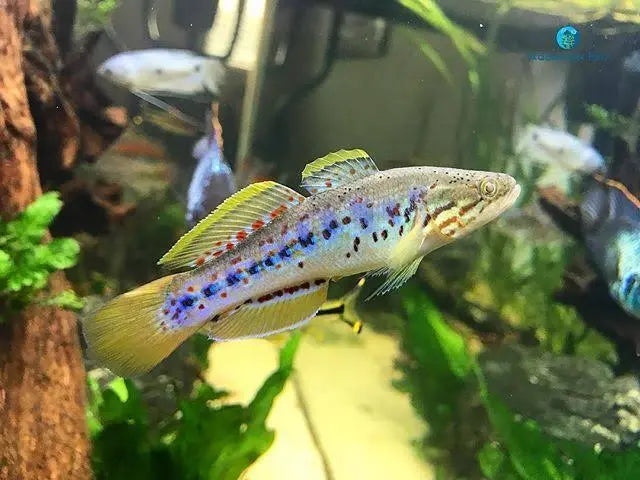
Native - Purple Spotted Gudgeon 10cm
Order today - receive it in as little as 3-5 days.
Return within 30 days of purchase. Duties & taxes are non-refundable.
Guarantee Safe Checkout
Purple Spotted Gudgeon (Mogurnda adspersa) Care Guide
The Purple Spotted Gudgeon is a hardy, colorful freshwater fish native to Australia, found in slow-moving rivers, creeks, and billabongs. This guide covers everything you need to know to care for them successfully in an aquarium.
1. General Information
• Scientific Name: Mogurnda adspersa
• Common Names: Purple Spotted Gudgeon, Southern Purple Spotted Gudgeon
• Size: Up to 15 cm (6 inches), though usually smaller in aquariums
• Lifespan: Around 5–7 years, sometimes longer with good care
• Temperament: Generally peaceful but can be territorial, especially during breeding
• Activity Level: Bottom to mid-water dweller, but will explore all areas of the tank
2. Aquarium Setup
Tank Size
• Minimum 60L (15 gallons) for a single fish
• 100L+ (25 gallons) for a small group (if kept together, provide hiding spots)
Water Parameters
• Temperature: 18–26°C (64–79°F)
• pH: 6.5–8.0 (slightly acidic to alkaline)
• Hardness: 5–20 dGH
• Ammonia/Nitrite: 0 ppm
• Nitrate: Below 20 ppm
Filtration & Water Flow
• Requires a moderate-flow filter (sponge or canister filter works well)
• Perform weekly 25–30% water changes to maintain water quality
Substrate & Decor
• Sand or fine gravel substrate is ideal
• Provide rocks, driftwood, and caves for hiding spots
• Live plants like Vallisneria, Java fern, or Anubias help mimic their natural habitat
3. Diet & Feeding
Purple Spotted Gudgeons are carnivorous and prefer a high-protein diet.
Best Foods:
✅ Live/frozen foods: Bloodworms, brine shrimp, blackworms, daphnia
✅ High-quality sinking pellets or carnivore-specific pellets
✅ Occasional insects like small crickets or mealworms
🚫 Avoid feeding too much dry food (flakes) as they may not provide enough nutrition.
Feed once or twice daily in small portions to prevent overfeeding.
4. Tank Mates
• Compatible tank mates:
• Peaceful or semi-aggressive fish that won’t fit in their mouth (e.g., rainbowfish, hardy tetras, small catfish)
• Other gudgeons (if space allows)
• Avoid:
• Very small fish like neon tetras (may be eaten)
• Aggressive fish (e.g., cichlids, large barbs)
• Slow-moving fish with long fins (e.g., bettas)
5. Breeding
Purple Spotted Gudgeons are egg layers and can breed in captivity with the right conditions.
Breeding Setup:
• Use a separate breeding tank (40L+ with plenty of hiding spots)
• Males guard the eggs laid inside caves or under rocks
• Eggs hatch in 4–7 days, and fry should be fed infusoria, baby brine shrimp, or crushed pellets
6. Common Health Issues
• Fungal/Bacterial Infections: Due to poor water quality—prevent with regular maintenance
• Parasites: Can be introduced by live food—quarantine new fish and food sources
• Obesity: Avoid overfeeding fatty foods like mealworms
7. Fun Facts
• They have a strong personality and can recognize their owners.
• Some individuals become quite interactive, even taking food from fingers.
• Once common in Australian waterways, their populations have declined due to habitat destruction and invasive species.
Final Thoughts
The Purple Spotted Gudgeon is an excellent fish for those looking for a unique, native Australian species. They are easy to care for as long as their territorial nature and carnivorous diet are considered. With proper care, they will thrive and show off their striking colors for years!
| Quantity |
1 gudgeon 10cm |
|---|
